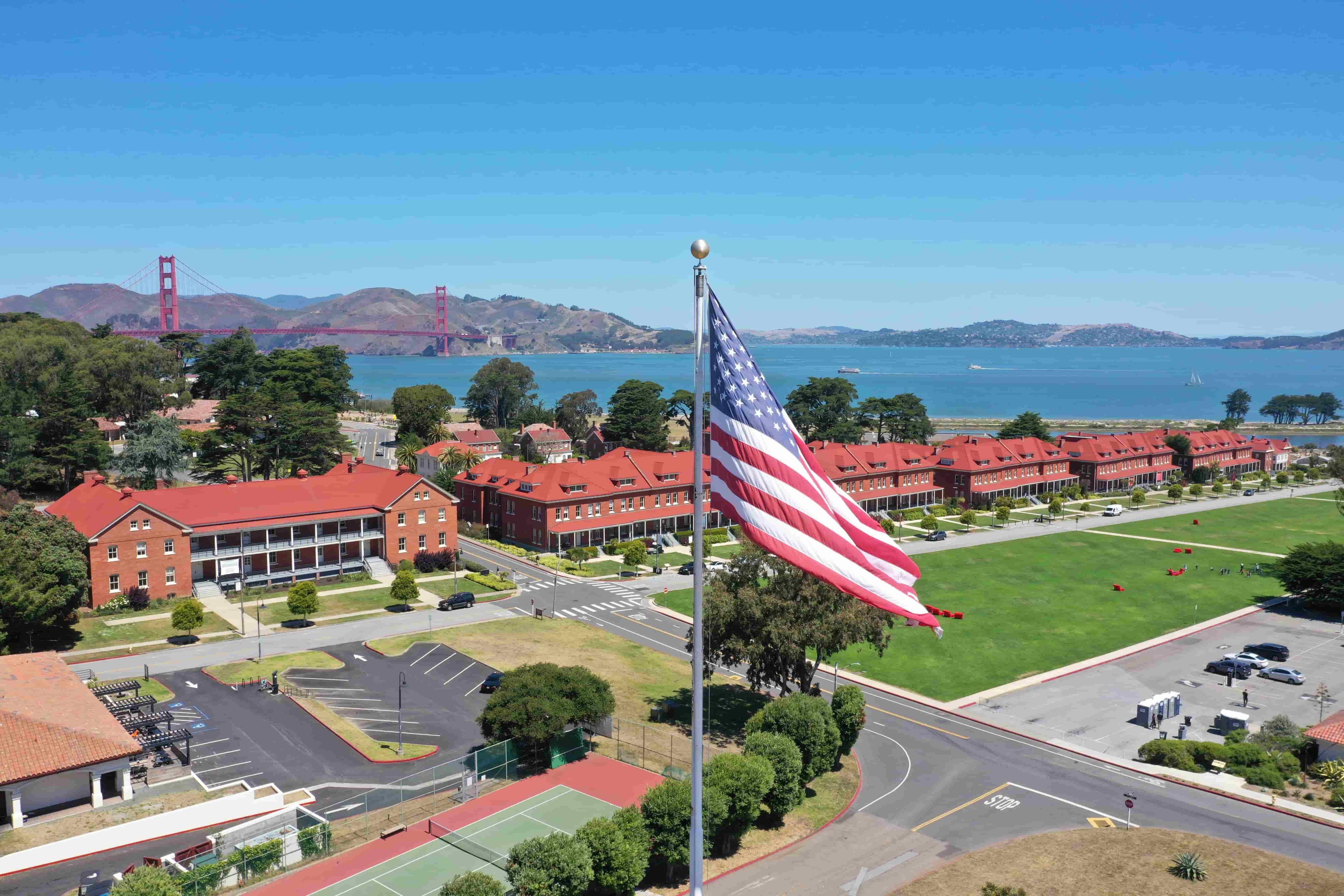Holding Down the Fort at the Presidio's Fort Scott
Presidio of San Francisco (October 17, 2008) — To paraphrase the Beatles: they’re fixing holes where the rain gets in. Next week, crews are wrapping up the first phase of a three-year, three million dollar effort to preserve nearly two dozen historic buildings that once housed the command center for San Francisco Bay’s coastal defenses. The behind the scenes preservation work will secure Fort Winfield Scott, a beautiful and little known campus near the Golden Gate Bridge toll plaza, until a new purpose animates the historic barracks and parade ground.
Since early spring, crews have been at work on the first six Mission style buildings, whose architecture is celebrated on the Presidio’s famed logo. The focus has been mostly on exterior repairs, including replacing roofs, fixing cracked and failing concrete, and painting the buildings. Another six buildings are scheduled for preservation maintenance next year.
More than half of the Presidio’s 476 historic buildings have been rehabilitated by the Trust in the last decade. Today, thousands of people live, work, and play in buildings that once served the Army. However, maintenance work such as this is needed to keep the remaining buildings in good condition while they await their future use. The Presidio is considered the largest historic preservation project underway in the United States.
“The objective is to keep the water out. They’re concrete buildings for the most part. If water gets in, the steel reinforcing begins to rust and the buildings could fall apart pretty quickly,” says John Sweeney, building projects manager for the Presidio Trust.
“The work we’re doing is not so much geared towards physical appearance, although that’s kind of a side benefit. Our focus is really towards preserving the building until a complete rehabilitation can occur,” says Trust architectural conservator Christina Wallace.
The work can be tedious at times. At one point, workers actually tapped every square inch of the walls searching for hollow voids behind the cement plaster that needed to be filled in. In the end, it not only preserves the buildings physically, it maintains their historic character and lays the foundation for future reuse. Each building has also been thoroughly photographed to document its original design.
“So often the public sees only the finished project — like the historic Civil War-era houses along Funston Avenue that now house offices,” says Wallace. “But there’s so much that goes on behind the scenes to preserve and maintain these buildings. Without the work we’re doing now, full rehabilitation becomes more challenging and costly.”
Literally a fort within a fort, Fort Winfield Scott has always been a distinct part of the Presidio. The U.S. took control of the Presidio in 1846 and, like the Spanish before them, quickly recognized the importance of San Francisco harbor in maintaining control of California. Concrete gun batteries were built by the Army beginning in the 1880s along the Presidio’s western edge to defend the Golden Gate. In 1912, the Mission style Fort Scott campus was constructed to house the Coast Artillery headquarters that operated the harbor defenses. Fort Scott reinforced the Coast Artillery’s status as distinct from the regular infantry at the Presidio. Previously, soldiers marched a mile-and-a-half to the coast from the Presidio’s Main Post.
By World War II, Fort Scott’s batteries were obsolete. With the United States’ victory at Midway in 1942, the threat of a Japanese invasion of the west coast faded. Following the war, with the advent of missiles and long range bombers, the batteries became a way of defending against an air attack — not ships. In 1946, Fort Scott was “demoted” from an independent post and again became part of the Presidio. The Coast Artillery was abolished in 1950 and succeeded in 1968 by the Air Defense artillery.
Set against a dramatic backdrop of the Golden Gate Bridge and the Marin Headlands, and surrounded by historic forest, Fort Scott is a place of quiet beauty with a strong sense of history. Preserving that character, its rich collection of historic buildings and landscapes is a priority for any future uses at Fort Scott. Long range plans call for a “contemplative retreat” — a center for education, conferences, and research that would take advantage of Fort Scott’s campus-like setting and tranquil atmosphere.
The Presidio Trust was established by the United States Congress in 1996 to manage the Presidio of San Francisco, a former army base located at the base of the Golden Gate Bridge. The 1,500-acre site contains the infrastructure of a small city as well as expansive open space, a 300-acre historic forest, spectacular views, and rare and endangered plants and wildlife. It comprises nearly 6 million square feet of buildings, including 469 historic structures that contribute to its status as a National Historic Landmark District, making it unlike any other national park. In establishing the Trust, Congress mandated that it make the park financially self-sufficient by 2013. The Trust is the only federal agency with this mandate.
